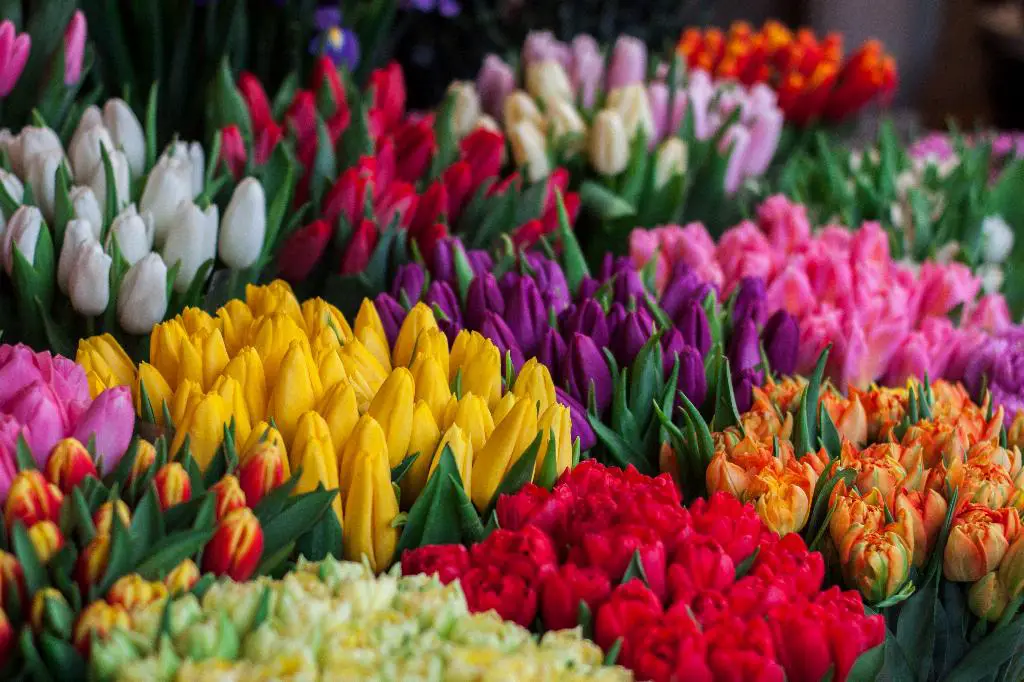Deciding when to cut down tulips can be a delicate balance between aesthetics and plant health. While it may be tempting to remove the foliage as soon as the flowers have faded, it’s important to allow the tulip foliage to die back naturally to ensure the bulbs have enough energy to bloom the following year.
One of the key factors to consider when determining when to cut down tulips is the condition of the foliage. Tulip foliage should not be removed until it has turned completely yellow or brown. This indicates that the plant has absorbed as much energy as possible from the sun and has transferred it to the bulbs for next year’s growth.
The length of time it takes for tulip foliage to die back can vary depending on a variety of factors. The type of tulip bulb, weather conditions, and the overall health of the plant can all play a role in how quickly the foliage deteriorates. In general, most tulip foliage will not die back until late June or early July.
It’s important to resist the urge to cut down tulip foliage too early, as doing so can weaken the bulbs and result in poor blooming the next year. Allow the foliage to wither and turn yellow or brown naturally before removing it. Some gardeners choose to tidy up the appearance of their garden by tying back the foliage rather than cutting it down immediately.
Another consideration when deciding when to cut down tulips is the overall appearance of the garden. While the dying foliage may not be the most attractive sight, removing it prematurely can have negative consequences for the health of the bulbs. However, if the foliage has become unsightly or is impacting the aesthetics of the garden, you can gently remove it once it has fully deteriorated.
As the tulip foliage starts to die back, it will naturally begin to yellow, indicating that the plant is nearing the end of its growth cycle. This is the optimal time to start thinking about cutting down the tulips, as the bulbs have likely absorbed all the energy they need for next year’s growth.
Proper timing is crucial when cutting down tulips, as removing the foliage prematurely can lead to weakened bulbs and poor blooming in the future. It’s essential to be patient and allow the foliage to die back on its own before taking any action. Waiting until the leaves have turned yellow or brown is a good rule of thumb to ensure the bulbs have stored enough energy.
One technique that some gardeners use to improve the appearance of the garden while still allowing the tulip foliage to decompose naturally is braiding or tying back the leaves. This can help keep the foliage out of the way while the bulbs absorb the necessary nutrients for the next growing season.
When the tulip foliage has completely turned yellow or brown and shows signs of dying back, it is safe to cut down the tulips. Use clean, sharp pruning shears to carefully trim the foliage down to ground level. Be careful not to damage the bulbs or surrounding plants while cutting down the tulips.
After cutting down the tulips, it’s essential to clean up the garden beds to prevent the spread of disease and pests. Remove any debris from the area and dispose of it properly. Consider adding a layer of mulch or compost to protect the bulbs during the dormant period and provide nutrients for the following growing season.
In conclusion, the best time to cut down tulips is when the foliage has turned completely yellow or brown and shows signs of dying back. Waiting until this point ensures that the bulbs have stored enough energy for next year’s growth and helps prevent weakening the plants. Remember to be patient and allow the tulip foliage to wither naturally before removing it to maintain the health and vitality of your garden.

